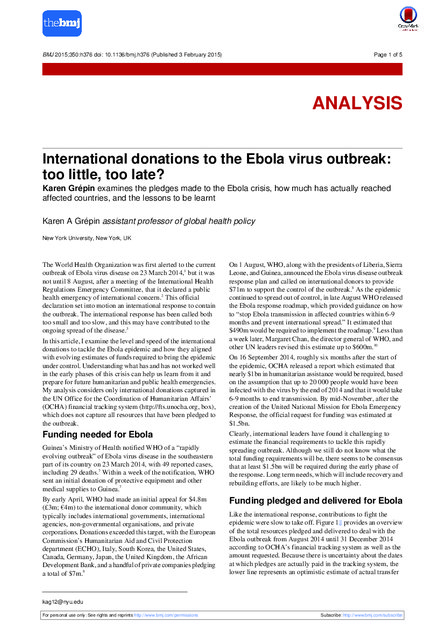
The World Health Organization was first alerted to the current outbreak of Ebola virus disease on 23 March 2014,1 but it was not until 8 August, after a meeting of the International Health Regulations Emergency Committee, that it declared a public health emergency of international concern.2 This official declaration set into motion an international response to contain the outbreak. The international response has been called both too small and too slow, and this may have contributed to the ongoing spread of the disease.3 In this article, I examine the level and speed of the international donations to tackle the Ebola epidemic and how they aligned with evolving estimates of funds required to bring the epidemic under control. Understanding what has and has not worked well in the early phases of this crisis can help us learn from it and prepare for future humanitarian and public health emergencies. My analysis considers only international donations captured in the UN Office for the Coordination of Humanitarian Affairs’ (OCHA) financial tracking system (http://fts.unocha.org, box), which does not capture all resources that have been pledged to the outbreak.
